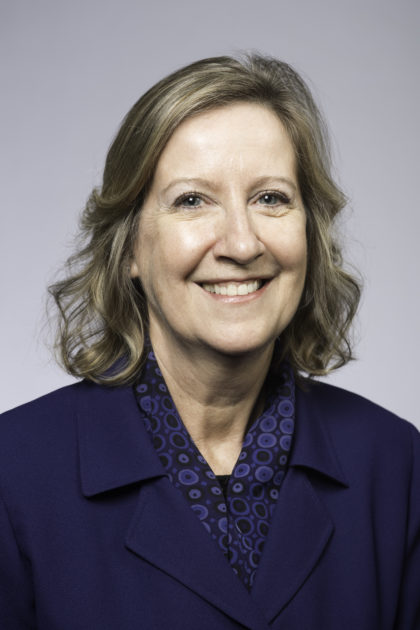 As the University of Rochester’s associate provost for academic administration, Jane Marie Souza wears many proverbial hats.
As the University of Rochester’s associate provost for academic administration, Jane Marie Souza wears many proverbial hats.
Since 2015, Souza has served as the University’s liaison with the New York State Education Department and the Middle States Commission on Higher Education, providing academic guidance and support to all schools across the University. Her job includes filing program submissions with the state to ensure all academic programs—including the University’s numerous multidisciplinary, interdisciplinary, and dual degree programs—are properly vetted for inclusion in the New York Inventory of Registered Programs.
That means the University is accountable to a regional accrediting agency (Middle States) and to the New York State Education Department, which requires the review process for all universities, public or private, as a quality-assurance measure.

This semester, wearing her hat of chief assessment officer, Souza is working with several University departments to pilot a program that would offer students an “outcomes transcript,” which would include alignment with learning outcomes. The initiative has the potential to allow students to have their transcripts from various University schools housed all in one space, creating a more complete digital profile.
What are some examples of popular interdisciplinary and multidisciplinary programs here at the University?
Some of the programs we have here at the University involve two or more distinct departments or schools. We offer, for example, a program in music leadership that is offered by the Eastman School of Music, but pulls in expertise and coursework from the Simon Business School. There is a program in Biomedical Engineering that draws on the engineering analysis expertise in the Hajim School of Engineering and Applied Sciences, the natural science expertise in the School of Arts & Sciences, and the clinical knowledge and expertise in the School of Medicine and Dentistry.
But, there are also interdisciplinary studies within a single school; for instance Digital Media Studies, which includes courses in humanities, computer science, and engineering through the School of Arts, Sciences & Engineering.
How does a department or student work with you to create a New York State Education Department-registered interdisciplinary or multidisciplinary program?
It’s typically a department chair or faculty member who comes to me with the idea for a new credential, sometimes based on needs they observe within their fields and sometimes driven by students’ ideas and interests.
I then work with the department to complete the state-required application, which includes articulating the learning outcomes for that program, identifying the faculty who would teach the courses, and documenting the assessment process to monitor the new program’s effectiveness.
All submissions go through the internal approval process first. My role is facilitating the approval process with the state, communicating with them continuously to ensure a successful application.
What are some of the new programs you’re working on now?
I just heard from the state that we received approval for two new certificates in literary translation—one at the undergraduate level and another at the graduate level. We’re also seeking certificates in stage management, medical physics, biological physics, and biotechnology for the School of Arts & Sciences. I’m working with the Eastman School of Music on advanced certificates in early music and music theory pedgogy and a certificate in performance practice.
Tell us about your proposal to create a new electronic “outcomes transcript” for students.
I’m currently serving on an academic advisory team that involves universities across the country, and we’re working with a software developer, AEFIS. The goal is to be able to create a multi-dimensional transcript that takes student learning outcomes and attaches tangible evidence—beyond the grade—of a student meeting those outcomes.
For example, somebody would be able to open the transcript and say, “There’s the paper, there’s the reflection, there’s my performance, clinical consultation, or the presentation I gave at a national conference.” This evidence bank would have the potential to demonstrate skills such as collaboration, leadership, ability to communicate verbally and in writing, et cetera.
The outcomes transcript would also allow students enrolled in dual degree programs to have one place where they could get all of their transcripts and supporting evidence, even if they took courses at different schools within the University.
Right now, this is a pilot project, involving several schools within the University. Faculty and administrators involved in the pilot project will present their work to the campus community on May 3rd. Stay tuned for registration information.



